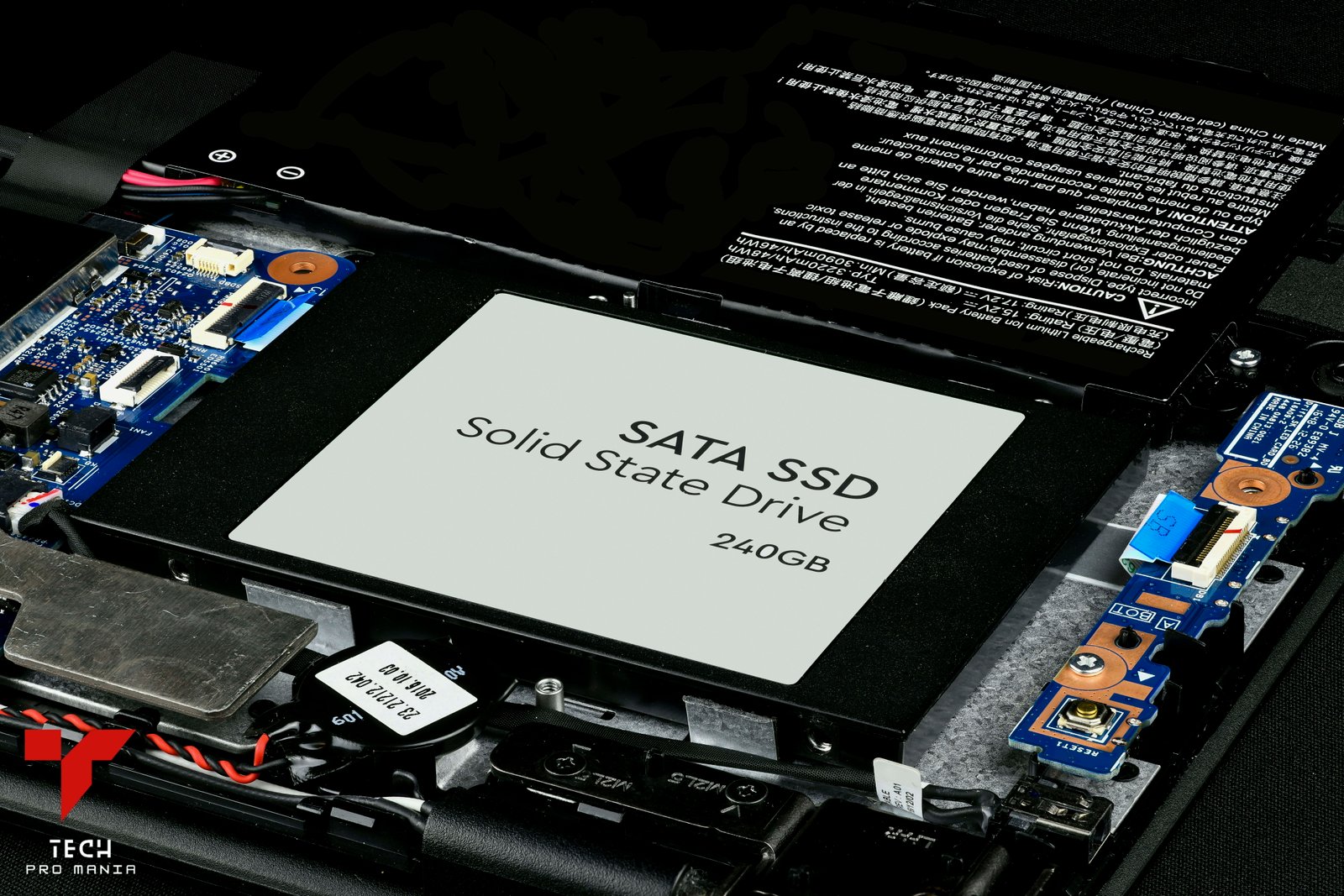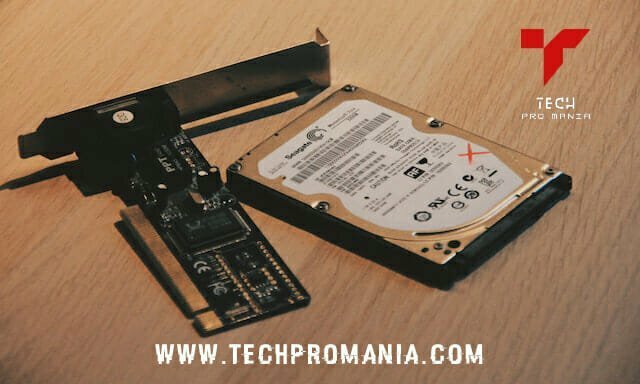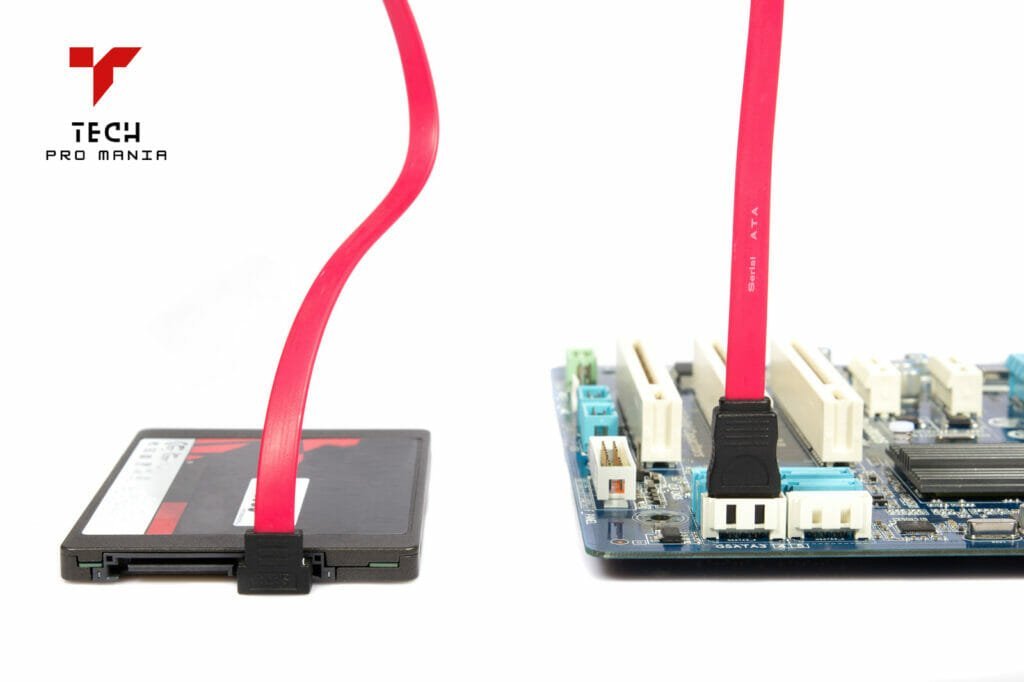These days, many people are looking for ways to save money. One way to do this is to install a laptop hard drive into a desktop computer. This can be a great way to get more storage space for your money. In this blog post, we’re going to show you how to install a laptop hard drive into a desktop computer. We’ll walk you through the entire process step by step. We’ll also answer some common questions that people have about this process. By the end of this post, you should know everything you need to know about installing a laptop hard drive into a desktop computer. Hard drives come in various forms, from simple 2.5″ hard drives to larger 3.5″ hard drives. This blog post will discuss how to install a laptop hard drive on a desktop computer.

What You’ll Need
You’ll need a desktop with an available 3.5 drive bay and a laptop hard drive (ATA or SATA, it doesn’t matter). Additionally, you’ll need a Phillips head screwdriver and an external USB hard drive enclosure (optional).
What Type of Hard Drive Do You Need?
To upgrade your laptop hard drive, you need to know what type of hard drive you need. There are three main types of hard drives: hard drives, solid-state drives, and hybrid drives. Of course, the type of laptop hard drive you need will depend on what kind of laptop you have.
What to do If your Complex Drive Malfunctions
If your laptop’s hard drive has stopped working, you can replace the hard drive with a new one. To return your computer hard drive with a new one, you will need to transfer the files and settings from the old hard drive to the new one. This process is complicated, so you should ensure your files are backed up. To start, you will need to unplug the old hard drive. Then, you will need to remove the old screws that hold the hard drive in place. There will be a bunch of screws on the back of the hard drive. You will need to remove these screws and return them to the new hard drive. Once you have done this, put the old hard drive in the new laptop. Then, plug the new hard drive into the computer. Make sure that the new hard drive is connected to the correct port. If you are unsure which port to use, you can refer to the instruction manual that came with your laptop. Once the new hard drive is connected to the computer, you must plug the power cord back in. Finally, you will need to restart the laptop.

Guidelines for How to install Laptop Hard Drive to Desktop
This guide is for you if you want to install a new laptop hard drive into your desktop computer. This article will explain the tools and materials you’ll need and the step-by-step process of installing the hard drive. If you follow our instructions carefully, then installation should be a breeze. So don’t hesitate and start upgrading your computer today!
You’ll need the right tools and materials to install a new hard drive into your desktop computer. You’ll need a laptop computer with an available hard drive bay and a USB cable to connect the laptop to your desktop. Additionally, you’ll need a Phillips head screwdriver and some caution.
First, disconnect the power cord from the laptop if it’s currently plugged in. Then remove the screws that secure the battery cover to the laptop chassis. Finally, lift the lid and remove both screws that hold in the hard drive. Be careful not to lose any of these screws!
Now it’s time to prepare your new hard drive for installation. Open up the retail packaging of your new hard drive and remove all of its contents. Make sure you have room on your work surface for both your old hard drive and your new one! Next, place your newly arrived hard drive onto your work surface so that it’s metal mounting bracket faces downwards (the large part should be facing outwards). Line up the screw holes on either side of the mounting bracket with those on your old hard drive using the Phillips head screwdriver. Once they are lined up correctly, gently but firmly tighten each screw by hand using the thumb grip provided by the Phillips head screwdriver. Be gentle! The harder you draw them now, the more likely you will damage or break either device during installation later on!
If everything goes according to plan after tightening all six screws, now is the time to reconnect the power supply cables from both devices. Reconnect the laptop AC power cord, then connect the HDD SATA cable from the old HDD to the corresponding port on the new HDD [4x USB 2]. Push the new HDD until the metal bracket snaps into position [6x screws]. Replace the battery cover and replace the laptop chassis.
Step One: Preparation
Before you start installing a hard drive on your laptop, there are a few things that you need to know. First and foremost, make sure that your laptop has an available USB port. Next, download and install the appropriate software. Once the software is installed, follow these simple steps:
- Open the computer’s main menu (usually located in the top left corner of your screen), and select “Settings.”
- Under “Hardware & Sound,” click on “Hard Drive.”
- Select your desired hard drive from the list of options, and then click on “Format.”
- Choose a name for your new hard drive, and click on “OK.”
After your new hard drive has been formatted, it’s time to install it. To do so, locate the laptop’s CD or DVD burner, and insert the disk that contains the installation software. Once the disk has been inserted, launch the installation program.
After the installation, you will need to reboot your computer for its new settings to take effect. When your computer reboots, you should see a new hard drive listed under “Hard Drive” in your computer’s main menu. If not, please consult your laptop’s documentation for further instructions.
Step Two: Swap The Hard Drives
When it comes to computer security, there are a few key steps that you should always take. One of these is to swap the hard drive in your computer, and here’s what you need to do:
- Unplug everything from your desktop and laptop, including the power cord, network cable, and other external devices.
- Remove the old hard drive from your computer. Make sure to unscrew all the screws on the back of the old drive before removing it.
- Install the new hard drive into your computer by screwing it in place with the screws removed in step 2.
- Plug everything back in and turn on your computer. You’re done!
Swapping the hard drive in your computer is a valuable step in protecting its security. By replacing the old drive with a new one, you can ensure that all your essential data is safe and sound. In addition, swapping the hard drive can also help reduce the number of times your computer needs to start up.
Step Three: Connect Everything Up
You’ll need to find the correct ports and connections to install your new hard drive.
Look on the motherboard of your computer and locate the SATA ports. You’ll need at least one port for the new hard drive.
Once you’ve located the SATA ports, connect one end of the SATA cable to the hard drive. Make sure it’s a tight fit!

Now plug the other end of the cable into an available port on your motherboard. Be sure to label each connection so you can avoid mistakes later.
Finally, screw in your hard drive using the screws that came with your computer case.
Now it’s time to connect your computer to the internet.
You’ll need a cable that connects your modem to your computer. Be sure to get an ethernet cable if you’re upgrading your internet speed too!
After connecting the cables, turn on both your modem and computer. You should now be able to access the internet.
Finally, connect your monitor, keyboard, and mouse to your computer and turn it on. You’re ready to start using your new hard drive!
Conclusion
By following the steps in this blog post, you should easily install a laptop hard drive into your desktop computer. Please feel free to leave feedback if you have any questions about the process.
The steps and guidelines provided in this article are enough to help you how to install laptop hard drives on a desktop. We would like you to ensure the utmost security of your data stored in the hard drive before proceeding with any steps mentioned in the blog.
- Best Keyboard for iPad 8th Generation - June 30, 2023
- Best iPad Keyboard with TrackPad - May 8, 2023
- My Computer Screen is Blue Tint; How to Fix It? - May 8, 2023
